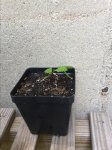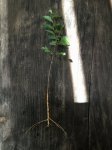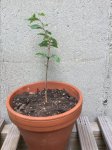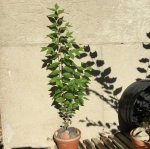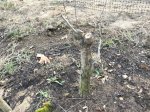Hi Forest,
You probably know most of this, but I'll say it anyway...
American elm don't enter dormancy like other trees do, they simply keep growing the same as the summer months until their leaves are frost killed. (Thats why they stay green well into November at times). I'm north of the 49th parallel and west of you and I "like" to wait until there is a severe killing frost to remove American elm under the circumstances that you are describing. (Usually the first week or so into November)
If the area is close enough to you to run back and forth, I would take a battery operated saws-all and cut around the roots about 8-10" 'round from the base. This will sever the roots, and initiate root growth. I like to water them once a week if I can to promote as much root growth as possible. Leave the trunk (and tap root) intact (and alone) until you are ready to remove the tree.
When I am ready to remove the tree, I dig it out, then cut the trunk off *close to the finished size. (leaving the trunk cut last will help you when removing the tree from the ground)
I bare root the tree and plop it into the ground on top of a flat rock and water it in. You could even take some soil from the area the tree was removed if you believe that it might be helpful.
I have found that they will more easily throw shoots from the base of the tree come spring, so you have to rub these off to encourage budding high up near the trunk chop. But I would recommend leaving any new lower shoots alone once you have a few up where you want them. (if you leave these for one season they should easily heal over without being much of a problem.
*Now this might be something that most people DON"T do, or don't see any use in doing, but in the spring a week or two before bud-break I take a 4" angle grinder with a 80 grit sanding disk on it and grind the top of the tree down to it's final size... and depending on where the buds break near the top, I have in the past, removed a bit more material once the buds begin to show. But I have never gone closer than 5/8" of the bud for fear of killing it... perhaps someone else has, and they could chime in... I just don't want to kill off a precious bud when the tree should be able to grow over this bit of wood. For the first year I simply apply time release fertilizer and water... the tree will dictate what it can handle after that.
HOWEVER, before anyone jumps all over me, I would not remove any tree, in any season, if I could do it in the spring before bud-break; just like Walter Pall recommends. (But, like Timbal described, they can be taken in other seasons too), Personally, I just think it's riskier for the tree's health and the first consideration should be for the tree...
I find it's cooler to dig in November without any insects to pester you, however, one should always wear hunter red or orange or some booze-fuelled bear hunter might just put an arrow in your took-kus as you root around wrestling with that tree you so lovingly want!... AND ALWAYS, ask for permission because just the time that you don't think anyone will care, or that anyone is watching, is just the time when your pleasant pastime turns into a pain-in-the-neck.
If you don't "have" to take the tree home, you could move it 10' away from where it was growing and plop it onto a flat rock... just bear in mind that you will have to water it regularly (or have a certainty that it will get water) until the roots take hold during the next season.
One last caution about American Elms though... the bark will easily peel away damaging your tree. I ALWAYS cut around the tree (through the bark into the wood) with a hand saw before cutting it off above this mark. I then take my battery operated 4" angle grinder with the 80 grit sanding disc and clean up the tree to (and past) the "hand sawn" area. I say "past because a clean cut will always heal better and most saws that I use during this procedure don't cut cleanly, the sanding disc does a nice job.
Finally, no matter how careful you are and no matter how certain you are that you can cut them without doing the "safety cut" first, I would highly recommend that you never try... been there, done that, paid the price!


